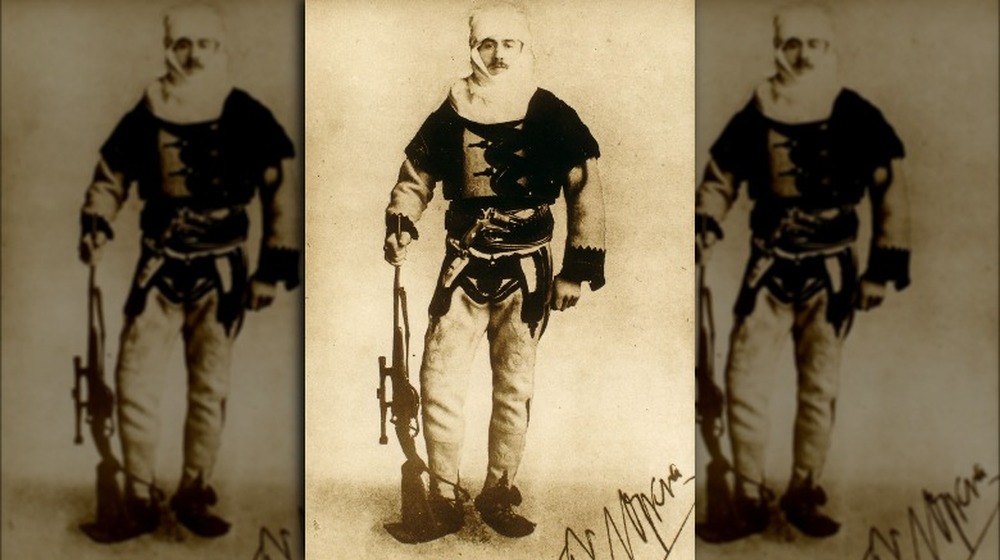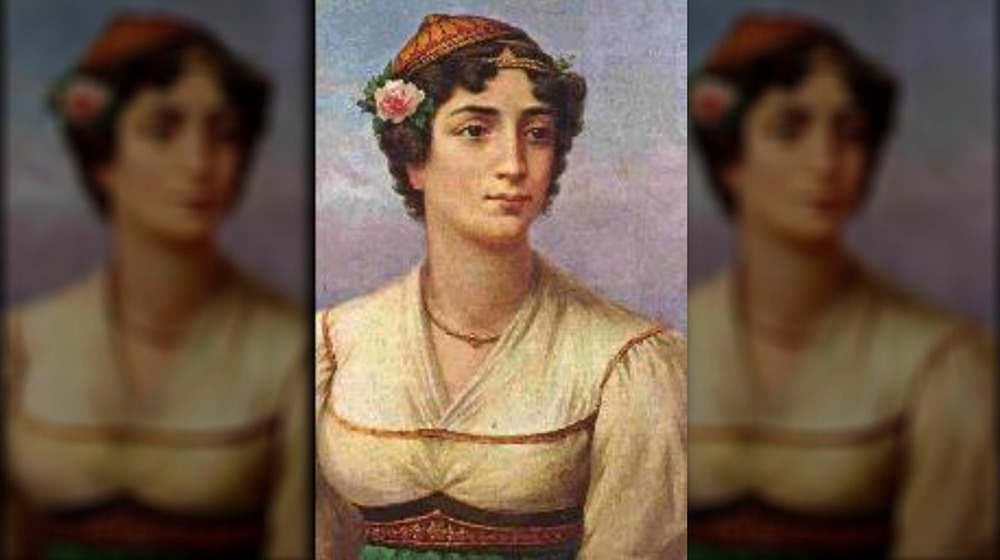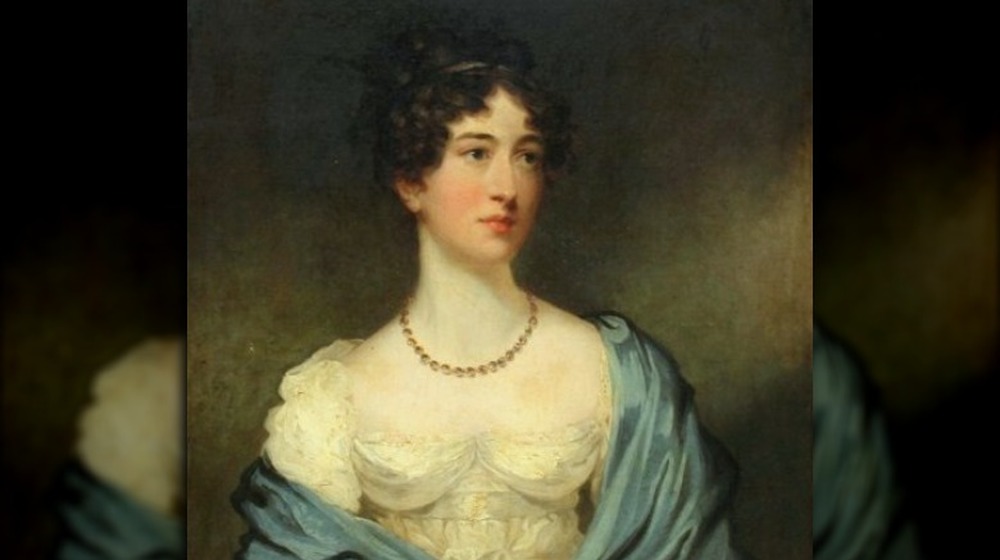Aristocrats Who Lost All Their Money
Aristocrats are kind of known for being quirky. At various points throughout history, they've been portrayed as glamorous, ridiculous, snobbish, excessive, and about a million other adjectives. But they were almost universally not known for one particular thing, and that's being frugal. Nope, if you were born into the upper class you tended to like to flaunt your money with fancy parties and velvet robes and expensive horses. Now, some aristocrats were smarter about their cash than others, and these folks were able to juggle the complexities of flaunting their wealth with, you know, actually hanging onto most of it at least until the day after they died from gluttony or suffocating under a 30-foot-high pile of paper money or something.
Other aristocrats were the opposite. They spent their money until they didn't have any more, and then they died a pauper's death under like one threadbare blanket on a straw mattress because they had to mortgage the good mattress for a stale loaf of bread and some moldy cheese. Who were these not-so-money-wise aristocrats? They came from all over the world and all across the ages. Here are just a few.
The 7th Marquess of Bristol spent it all on drugs
Aristocrats are most famously known for their excesses, so let's begin with an aristocrat who didn't just like velvet robes and roasted swan but also drugs. Okay granted, John Jermyn, the 7th Marquess of Bristol probably didn't own any velvet robes and probably also never ate swan, since he died relatively recently in 1999. According to the Guardian, he came into his wealth young but not super-young — he inherited his first fortune (£1 million) at the age of 16 and by 21 he had amassed a fairly large (also inherited) additional fortune consisting of more cash and some big-ticket businesses. So he was pretty set up, but when you come into that kind of inheritance when you're a teenager, well, let's just say you don't exactly have the business sense to properly invest it all and, um, not spend it on stuff like booze, cocaine, and heroin.
By the time he was 29, Jermyn was an addict but also a dealer — a pretty big dealer, in fact, judging from the roughly £2.5 million worth of drugs he was busted with in 1983. A couple of years later, he sold his New York home and spent the proceeds on drugs. In 1988, he got busted for cocaine, then three years later for narcotics. By 1996 he'd sold pretty much everything and by 1999 he was dead. His cause of death was "multiple organ failure," probably related to the years of drug use.
Brajraj Mahapatra had nothing left except his title
The British ruled India from 1858 to 1947, but even during that time there weren't a whole lot of actual British people in India. Most of the governing was done by Indians, and the old Indian monarchy survived for a while after the British decided to take their government elsewhere. In fact, branches of the Indian monarchy survived well into the 21st century.
Brajraj Kshatriya Birbar Chamupati Singh Mahapatra was the last member of a 700-year-old dynasty. He lived until the end of 2015, and for the final years of his life he was the Maharaja of the Tigiria State of Orissa. He wasn't really super kinglike, though. He spent his time traveling around his kingdom to visit his people, but he basically survived on their handouts.
It wasn't always like that. According to the Times of India, Brajraj used to be a wealthy car collector — at one point he owned 56 of them. But when the British left India Brajraj lost his income, his family left him, he sold his palace for a pittance and then he tried to drown it all out with alcohol. At the end of his life, he seemed to embrace the life of a pauper — what little income he had he would always redistribute to the poor, and he was so dirt poor himself that one of his last acts was to collect a modest tax from his people to help pay for his cremation.
Marcus Gavius Apicius ate all his money (sort of)
Apicius, the oldest known cookbook, is probably around 2,000 years old, and it's full of recipes for stuff like ostrich, wood pigeon, and figpecker, you know, in case you wanted to whip up something simple for a weeknight supper. There's a misconception that Apicius was written by Marcus Gavius Apicius, but it was probably just named after him. He was a pretty infamous guy, after all, known for either his love of culinary delights or his gluttony, depending on your perspective.
According to Ancient Origins, Apicius was a member of the Roman elite. He ate stuff like flamingo tongue and might have sort of invented foie gras, which of course is the time-honored tradition of cramming a goose full of food until it develops an artificially ginormous and evidently delicious liver, though you would really only know that if you didn't have a moral problem with goose-torture.
Anyway, the Roman satirist Seneca wrote about Apicius' final days — evidently he burned through 100 million sestertii building himself a nice kitchen and throwing parties and was shocked to discover afterwards that he was practically broke (though let's be fair anyone who's remodeled a kitchen can sort of relate to that). Well, he still had 10 million left but that will only buy you like 1/10th as many parties and a much smaller kitchen so instead of hiring a financial advisor he decided to drink some poison. And thus ended the gluttony of Apicius.
Baron Franz Nopcsa dug up fossils, was from Transylvania and also died broke
No, we're not going to tell you the real story of Count Dracula, because spoiler alert there was more than just one weird rich dude from Transylvania and also Count Dracula never dug up any fossils or actually died. Supposedly. This is the story of a completely different Transylvanian: Baron Franz Nopcsa von Felso-Szilvas who had a really long name and was also filthy rich.
This particular filthy rich baron was not content to give himself a weird butt-shaped hairdo and drink blood out of a chalice like a proper Transylvanian aristocrat. He was an explorer and amateur paleontologist and he liked to hang out with mountain men, you know like those guys on the History Channel only not as fake. In fact according to Smithsonian, Nopcsa wasn't just some rich guy who liked to dig up dinosaur fossils but didn't really know what he was doing, he actually identified five different species of dinosaur and made some very smart scientific observations about them that are still broadly accepted by modern paleontologists.
But Nopcsa also suffered from what was probably manic depression, and at the age of 55 inexplicably decided to sell all his fossils and books for not very much money. Two weeks later, he shot his secretary, who just so we're clear was probably also his lover. Then he shot himself.
Manto Mavrogenous spent it all on a revolution
Wealthy people lose their money for a lot of different reasons, but it mostly comes down to either pure selfishness or pure stupidity. A rare few, though, become victims of their own generosity. Or in Manto Mavrogenous' case, victims of their own idealism. Mavrogenous was a Greek aristocrat who spent her entire fortune on a revolution. According to Cine Manto, her wealthy family fled Greece after the execution of her uncle but crept back a few years later to join the blossoming insurrection. By the time the insurrection became a full-blown rebellion, Mavrogenous was rich enough in her own right to buy a small fleet of ships, which she dedicated to the cause.
Ships are pretty expensive, but Mavrogenous wasn't done yet. She poured her own funds into an 800-man infantry and then got betrothed to Dimitri Ypsilanti, who was basically the mouthpiece of the revolution. Things were looking good, and Greece finally achieved independence not long afterwards.
After that, though, Mavrogenous' luck ran out. Ypsilanti dumped her, then she got robbed, then her house burned down. She got a small stipend as "thanks" for her dedication to the rebellion, which is pretty insulting when you've basically dedicated your life and fortune to people who can't be bothered to reward you with a living wage. Broke and demoralized, Mavrogenous ended up moving in with relatives, and then died of typhoid fever at the age of 44.
Gilles de Rais squandered his money on black magic
Gilles de Rais fought alongside Joan of Arc, so he must have been pretty cool, right? The French monarchy thought so, for a while, and they even gave him the fancy title "Marshal of France" after he helped Joan emerge victorious from the Siege of Orleans. But Rais was harboring some serious evil (maybe) and when he died he was a notorious serial killer (maybe). The trouble is, forensic science sucked back in the 1440s, so who knows.
It is true that he was rather quirky, though, and not especially great with his money. He liked to host lavish performances featuring expensive costumes that got destroyed and then had to be recreated for the next show. According to Almost History, he burned through so much money in his youth that he used his paltry remaining funds to hire alchemists and various other practitioners of the magical arts. Why? So they could poof him some gold or maybe a memory-wiping potion that would make his debtors forget all about him. When that didn't work, he kidnapped a priest in the hope of trading the poor dude's life for a clean financial slate.
That's when people started whispering that maybe he was behind the disappearances of a whole bunch of local peasant children. Rais was arrested, threatened with torture and excommunication, and confessed to all sorts of awful crimes, which by the way really means nothing because torture. Anyway, they hanged him. The end.
Hester Stanhope refused to get rid of her servants even though she was broke
Hester Stanhope started out with a pretty conforming existence as a conforming Georgian era wife, but then her husband died and she was like, yeah, I'm not doing this anymore. Well also she didn't inherit any of her husband's money, so ...
Stanhope had some funds of her own and decided to go off adventuring in the Middle East. After a few years of running around being rude to people (including Lord Byron), the Pasha of Acre gave her a permanent place to live. Granted, it was the crappy, dilapidated ruins of a convent, but never look a gift dilapidated convent in the front door, right? Stanhope fixed the place up and happily lived out the rest of her quirky existence there, with the help of no less than 30 servants. Alas, though, you can only pay all those salaries for so long before your coffers start to run dry.
According to the Guardian, as Stanhope got buried by debt she kind of went a little bit bonkers. Her house was weird and creepy and not especially comfortable, but she refused to go back to England. She also refused to get rid of any of her servants, which seems almost benevolent except for the part where they took all of her stuff after she died in her sleep at the age of 63, so that might say something about how much they respected her.
Arbit Abdoll bought a cursed palace
Arbit Abdoll was an Armenian diamond merchant who bought a noble title — that's right, "bought" with actual money. According to Nobility Titles, Abdoll moved to Venice in 1785 and started hanging out with Paolo Renier, a Venetian ambassador who at some point said something along the lines of, "Hey Arbit you wanna buy an obscure marquisate?"
Abdoll did want to buy the obscure marquisate as it turns out, and after that he got to introduce himself at parties as "The Marquis." So that was fun, but Abdoll also wanted to have a palace to go along with his fancy title, and as luck would have it there was just such a place up for sale in the prime real estate along the canals of Venice. It was cursed, but never mind.
Abdoll bought the palace and you can guess what happened next. He lost all his money, though no one seems to have written down exactly how that happened. It probably isn't super important in the grand scheme of things since the end result was that he had to sell back his misbegotten title, and not long afterwards he died in squalor. Incidentally, the cursed palace went on to curse again, killing or bankrupting at least six different owners right up through modern times.
The Viscount of Kingsborough spent all his money on a weird obsession
Noble people seem to have been especially obsessed with South American people, or more accurately, with South American people and their stuff. Anyway, more than one independently wealthy person paid the ultimate price for seeking the Lost City of Z or the Fountain of Youth or various other things that probably never existed. Edward King's special obsession was the Ten Lost Tribes of Israel. In case you're not really up with your Biblical history, those are 10 of the 12 tribes who moved into the Promised Land after Moses died. For whatever reason, King thought the Mayans were one of the 10 lost tribes, because that makes so much sense.
Anyway, King was Viscount of Kingsborough and he had a lot of money, so he decided to invest it in his weird theory. According to the Biblical Archaeology Review, he spent more than £40,000 writing and publishing nine books about the indigenous people of modern-day Central America. Now by modern standards it doesn't seem like it would be a big deal to write a few books, but King basically quit doing everything else and spent all his time and money researching and painstakingly studying old Mesoamerican texts, and as a reward he ended up in a debtor's prison because he couldn't afford to pay his printer. That was already super awful but then he got typhus and died, and worse, never proved anything about the genetic heritage of the Mayans.
The 6th Earl of Westmorland supported the wrong monarch
It's never great business sense to invest in an uprising. Well, sometimes it is if you happen to pick the right side and they're sufficiently grateful for your help, but those things don't always line up. Anyway, Charles Neville, 6th Earl of Westmorland picked the wrong side and paid a pretty harsh price for his poor choices.
According to the Luminarium, Neville's dad was a staunch supporter of Queen Mary, you know, "Bloody Queen Mary." After the Catholic Mary died and was succeeded by her Protestant half-sister Elizabeth, a lot of previously loyal aristocrats became less loyal or not loyal at all. A bunch of them, including Neville, participated in a 1569 rebellion against the queen in the hope of restoring the Catholic mass and replacing Elizabeth with her cousin Mary, Queen of Scots.
Since this is a story of aristocrats who had bad endings, you can probably guess how the rebellion went. When it became clear that the royal army was going to kick rebel butt, Neville fled to the mainland. Meanwhile, the British confiscated pretty much everything he had previously owned and he ended up eking out an existence on a small pension courtesy of the king of Spain, who was also not a huge fan of Queen Elizabeth. He died in exile and in debt in 1602.
Elizabeth Woodville was just not very well liked by really anyone
In the time-honored tradition of the British monarchy — at least up until the very recent past — the king married the daughter of some other king or at least someone who was very well connected in whatever foreign nation the king wanted to build an alliance with. What he did not do, no matter what the fairy tales say, was marry a low-ranking person from his own country even if she was a super-hot low ranking person from his own country.
Edward IV wasn't really one for following the rules, though, and when he first spotted the famously beautiful Elizabeth Woodville — the daughter of a lowly duchess and a knight — he pretty much immediately decided to make her his queen. His plan didn't go over too well with like everyone else in the royal family, and poor Elizabeth spent her time as queen basically being hated by everyone.
According to ThoughtCo., after Elizabeth became a widow, she kind of got thrown to the wolves. Her kids were declared illegitimate (mostly because her husband's brother wanted to be king, but that's a whole other story). When Henry VII became king and married Elizabeth's daughter things were okay for a while, until Henry accused Elizabeth of plotting to overthrow him. Happily (or maybe unhappily), he decided to take all her money and send her to a nunnery in lieu of killing her, and that's where she died five years later.











